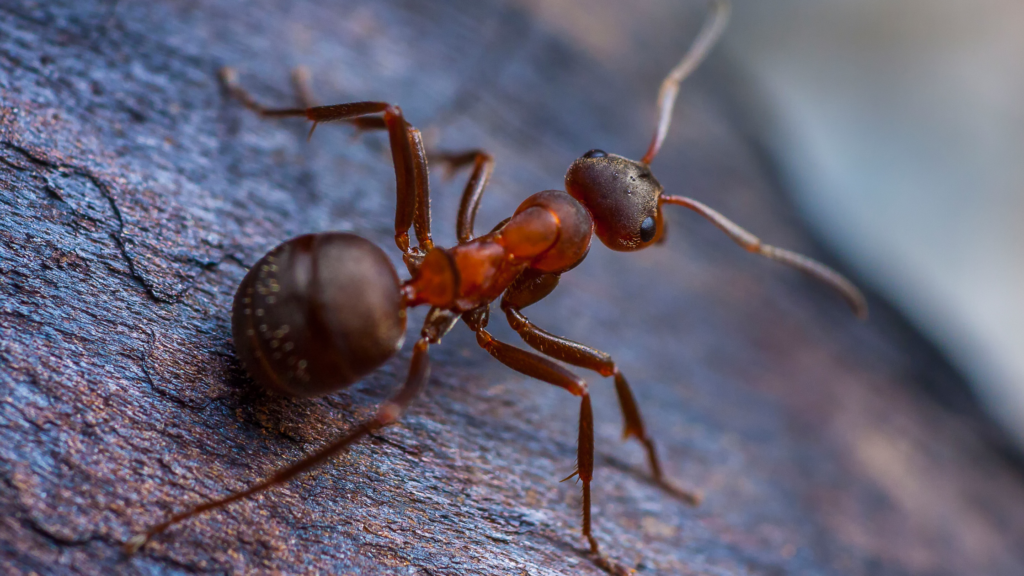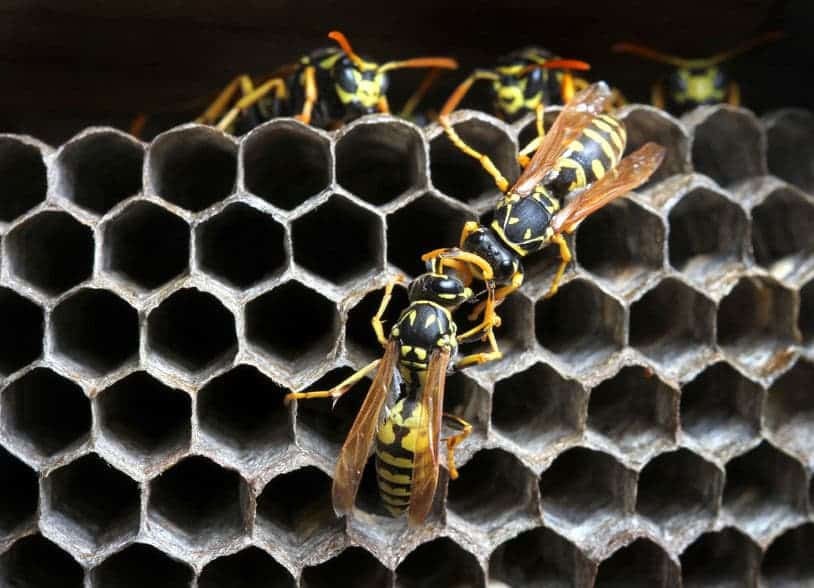Do you believe the only good roach is a dead roach? If so, you’re not the only one. Cockroaches are just plain gross. And where there’s one roach, there’s usually a million more. Check out our extensively creepy collection of cockroaches below. And if you spot any of these ugly critters in your home or business, give us a call right away.
American Cockroach
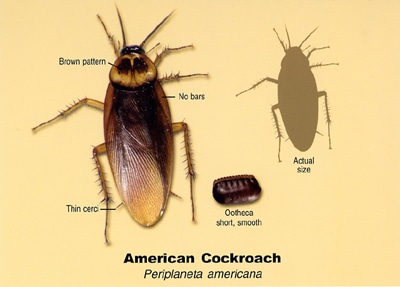
HABITAT
This cockroach is associated with moist areas and is commonly found in sewers and basements. It is also commonly found in homes, factories, hospitals, and zoos.
BIOLOGY AND BEHAVIOR
This cockroach is reddish-brown with light markings behind the head. The cerci at the tip of the abdomen are long and thin. The American cockroach male has two shroter styletsto the inside of the cerci, while the female only has one pair of cerci. This cockroach has pads on its feet and legs that are susceptible to pesticide uptake. The average egg to adult development is 600 days. Females have 14 to 16 eggs per ootheca.
DISTRIBUTION
Nationwide
Brownbanded Cockroach
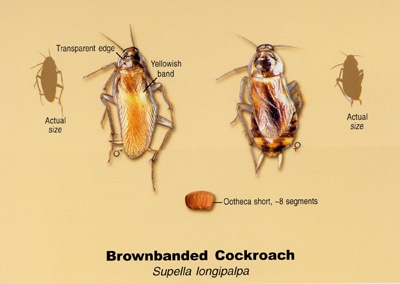
HABITAT
Brownbanded cockroaches need less moisture than the German cockroach, so they tend to be more broadly distributed in the home, such as in living rooms and bedrooms. They can often be found in homes and apartments, but are less common in restaurants. They tend not to be found in the daytime, since they avoid light.
BIOLOGY AND BEHAVIOR
This cockroach is a dark brown, and the wings range from reddish-brown to brown. There are two pale-brown bands on the wings, and the edge of the pronotum is clear. The average egg-to-adult development is 161 days and females have 14 to 18 eggs per ootheca. Brownbanded cockroaches eat almost anything organic, including decaying matter.
DISTRIBUTION
Nationwide
German Cockroach
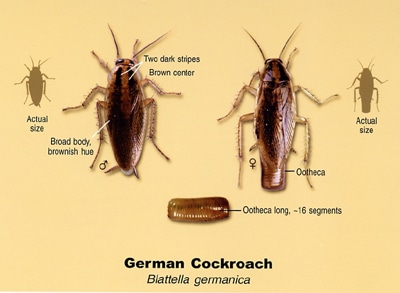
HABITAT
This cockroach lives indoors in close association with people. It prefers to live in kitchens and bathrooms of homes and apartments, restaurants, supermarkets, and hospitals.
BIOLOGY AND BEHAVIOR
This is among the most common species of cockroach in the United States and has been linked to the outbreak of illness. Nymphs and adults of both sexes have two dark stripes behind the head. Males have a cigar-shaped abdomen, while the females are more rounded. The German cockroach is a bit more reddish than the Asian cockroach and unlike it’s cousin, cannot fly. The average German cockroach life cycle is 103 days. Females have 30-40 eggs per ootheca. They particularly like starch, sugary foods, grease and meats. In certain situations where there is a shortage of foodstuffs, they may eat household items such as soap, glue and toothpaste or they may even turn cannibalistic, often chewing on the wings and legs of each other.
DISTRIBUTION
Worldwide
Oriental Cockroach
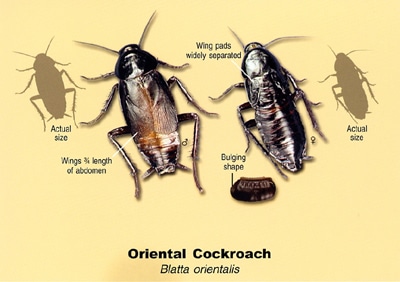
HABITAT
They can often be found around decaying organic matter, and in sewers, drains, damp basements, porches, and other damp locations. They can be found outside in bushes, under leaf groundcover, under mulch, and around other damp places outdoors. It is a major household pest in parts of the northwest, mid-west, and southern United States.
BIOLOGY AND BEHAVIOR
It is shiny black and has no distinctive markings. The male has wings that cover only about three-fourths of the abdomen; the female has only wind pads or lobes. The average egg-to-adult development is 589 days. Females have 16 eggs per ootheca.
DISTRIBUTION
Nationwide except Florida
Smokybrown Cockroach
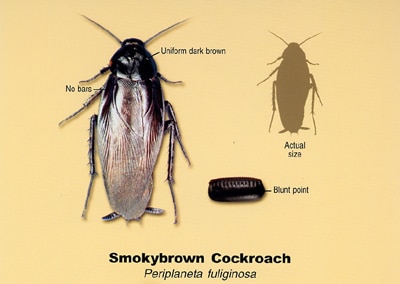
HABITAT
The smokybrown cockroach prefers warmer climates and is not cold-tolerant. It may, however, be able to survive colder climates by going indoors. In addition to this, it fares well in moist conditions and appears to be particularly prevalent in moist concealed areas. It often lives around the perimeter of buildings.
BIOLOGY AND BEHAVIOR
It is mahogany brown to black with no patterns behind the head. The average egg-to-adult development is 600 days. Females have 20 eggs per ootheca.
DISTRIBUTION
Southern United States and California
Australian Cockroach
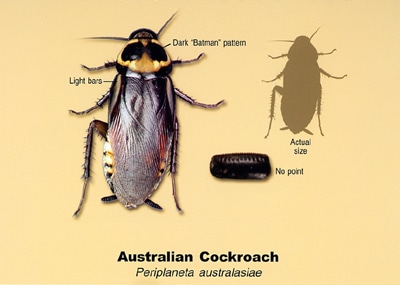
HABITAT
This cockroach prefers warmer climates and is not cold tolerant, however, it may be able to survive indoors in colder climates. It does well in moist conditions but also can tolerate dry conditions as long as water is available. It often lives around the perimeter of buildings, and it is one of the most common species outdoors in Florida. It can also be found in numbers in areas of high temperature and humidity such as restaurants or buildings with tropical plants as part of their decor.
BIOLOGY AND BEHAVIOR
It is a reddish-brown to dark-brown with a characteristic marking behind the head. On the front edge of the base of the forewing is a light-yellow band. Nymphs have light-yellow spots on top of the abdomen. The average egg-to-adult development is 365 days/ Females have 24 eggs per ootheca. This cockroach prefers eating plants more than its relatives do, but can feed on a wide array of organic (including decaying) matter.
DISTRIBUTION
Southern United States and California
Asian Cockroach
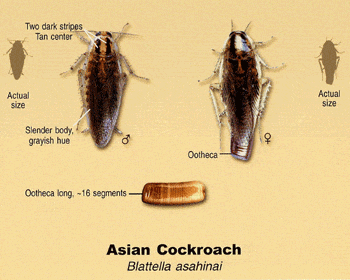
HABITAT
These cockroaches live outdoors and are found in shaded areas of gardens, pastures, citrus groves, dense ground cover and mulched ornamentals, but are also perfectly comfortable indoors.
BIOLOGY AND BEHAVIOR
The Asian cockroach is similar in appearance to the German cockroach, but will readily fly when disturbed. Its peak populations are seen in the spring and summer and are often observed after the mulching of landscape. They are attracted to lights, light reflected from pale surfaces and windows.
DISTRIBUTION
Southeastern United States
Brown Cockroach
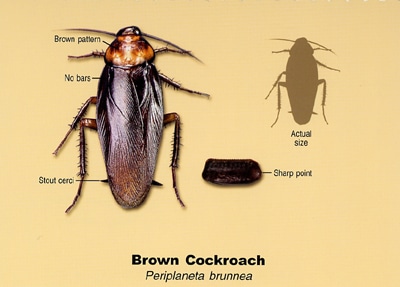
HABITAT
This cockroach prefers warmer climates and is not cold tolerant, however, it may be able to survive indoors in colder climates. It does well in moist conditions but also can tolerate dry conditions as long as water is available. They are mostly found outdoors under the bark of trees, in brush, and in crevices. It readily enters houses and is often called a palmetto bug. This cockroach may also be a pest of greenhouses.
BIOLOGY AND BEHAVIOR
This cockroach is almost identical to the American cockroach in appearance. It is reddish-brown. The cerci at the top of the abdomen are stubby, whereas the American cockroach has long, thin cerci. Egg-to-adult development takes 224 to 304 days. Females have 21 to 28 eggs per ootheca.
DISTRIBUTION
Southern United States
Florida Woods Cockroach
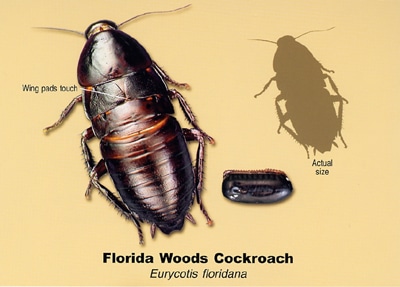
HABITAT
This cockroach prefers damp locations, lots of moisture, and does well in warm, damp climates. The roach can wander indoors at times, especially into damp locations, such as bathrooms, however, it is found mostly outdoors and is not considered a major pest in the home. It is cold intolerant and requires a warm, sub-tropical or tropical climate. It can often be seen in sheltered outdoor locations, such as under leaf litter, in tree holes, and under lumber and boards, and other crevices. It is often seen in bushes and wooded areas. It is also often referred to as the Palmetto bug.
BIOLOGY AND BEHAVIOR
It is often called the stinking cockroach because it produces a foul-smelling fluid to protect it from predation. It is dark-reddish-brown to black. The nymphs have broad yellow bands on the top of the thorax. The average egg-to-adult development is 107 days. Females have 21 eggs per ootheca.
DISTRIBUTION
Southeastern United States
Cuban Cockroach
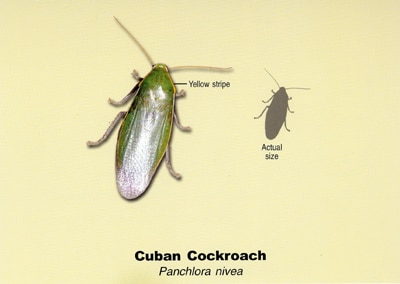
HABITAT
It is usually an outdoor species and is rarely found indoors and thus is not considered a pest. The adults can often be found in shrubbery, trees, and plants. The young can be found under logs and other debris. It is often attracted to bright lights and it is mainly a nocturnal species.
BIOLOGY AND BEHAVIOR
Males and females are pale-green, whereas the nymphs are dark brown. It is often attracted to bright lights and it is mainly a nocturnal species.
DISTRIBUTION
Found in Florida and along the Gulf Coast and Texas, and widely distributed in Mexico and Central America
Surinam Cockroach
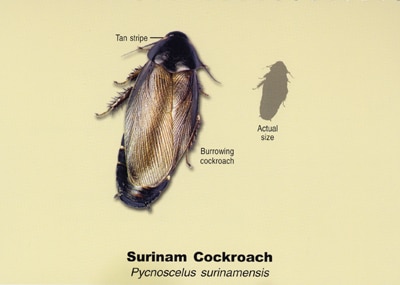
HABITAT
It is a plant-feeding, burrowing species that lives outdoors and often infests potted plants. When plants are brought inside, the cockroach infests the premises. These cockroaches also often infest greenhouses.
BIOLOGY AND BEHAVIOR
This cockroach is shiny-brown to black with golden markings on the abdomen. The pronotum behind the head has a yellow margin along the front edge. This species is considered parthenogentic. Adults live about 307 days. Females produce 26 eggs per brood.
DISTRIBUTION
Southern United States
Death’s-head Cockroach
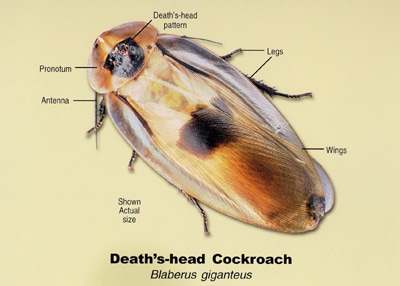
HABITAT
This cockroach may be found around garbage and in dumpster areas. These cockroaches are often kept as pets in science classrooms.
BIOLOGY AND BEHAVIOR
The death’s-head cockroach is from Cuba and South America. The name death’s head comes from the markings on the top of the thorax. Adults have wings but do not fly, while juveniles do not have wings at all. This species also cannot climb smooth vertical surfaces, such as glass, which makes them easy to house in an open aquarium or similar.
DISTRIBUTION
South Florida
Pest Control Library | Ants | Beetles | Cockroaches | Termites | Other Pests

